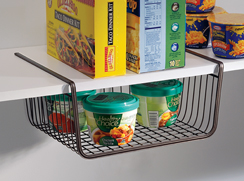I like things easy and convenient just as much as the next gal (guy). But after cancer became all too personal in our own home, we’ve had to rethink everything we knew about a sparkley, sanitized home. I’ve cleaned houses professionally, for about the last 10 years. And I’ve leaned a lot from our Natural Doctor to endless research over the years. However (oh here comes the disclaimer) Let’s take this stuff with a grain of salt. For instance- the fad reports. Diet soda & painting your nails make you fat. No eating chocolate cake for breakfast makes you fat. But these reports on toxic ingredients, we can’t ignore. As they have been gaining recognition from even the medical community. My Mom’s regular MD told her to stop using bleach.
You can’t be 100% organic right? My justification is we’re not bathing in this stuff. Yet most of us use sanitizing products everyday. Raw chicken juice splattered can carry it’s own risks, right? We all know that. But what about the amount of germs on our cell phones? Did you know our electronics (phone, Tablets, TV remotes) have about 10 times more bacteria than toilet seats! Seriously. Then add Junior using your Tablet as you wait at the Dentist, think of all the places his little hands have been..
But some of these toxic cleaning solutions, even room spray require special garbage disposal. Crazy. If you care about your health, your family, your pets and our earth: here are a few alternatives. Don’t wait, get your home healthy now.

If you still need PROOF, the following are some symptoms that may be a result of using cleaners that are not natural:
Glass cleaners, laundry stain removers, carpet cleaners, automobile cleaners, windshield wiper fluid, de-greasers, oven cleaners, and rust removers:
A skin and eye irritant also associated with blood disorders. In laboratory experiments, exposure to high doses of 2-BE has been shown to cause reproductive problems.
Window cleaners, drain cleaners, toilet cleaners, bathroom cleaners, oven cleaners, stainless-steel cleaners, car polish, and all-purpose cleaners:
Vapors may irritate the skin, eyes, throat, and lungs. People with asthma may be particularly sensitive to the effects of breathing ammonia. Ammonia may also cause kidney and liver damage.
Coal tar dyes found in most types of cleaning products:
Derived from petrochemicals, and may be contaminated with trace amounts of heavy metals like arsenic, cadmium and lead. There is concern that synthetic dyes may cause cancer and that heavy metals can harm the nervous system and cause other adverse health effects.
Liquid laundry detergents, all-purpose cleaners, floor cleaners, car wash products, de-greasers, dishes soap, oven cleaners, and glass and surface cleaners:
A possible human carcinogen that is persistent in the environment. DEA is a mild skin and severe eye irritant. MEA is known to induce asthma in workplace settings.
Fragrance chemicals found in most cleaning products:
More than 3000 chemicals are used in fragrance mixtures. Many are irritants and can trigger allergies, migraines, and asthma symptoms. In addition, synthetic musks used in detergents build up in the environment and can be toxic to aquatic organisms & humans.
Liquid laundry detergents, stain removers, all-purpose cleaners, air fresheners, toilet bowl cleaners, de-greasers, and car wash products:
Degrade into nonylphenols (NPs), which can mimic the hormone estrogen. In laboratory experiments, NP has been shown to stimulate the growth of human breast cancer cells and cause adverse reproductive effects in fish and other aquatic organisms.
Abrasive cleaning powders:
Rated by the International Agency for Research on Cancer as a known human carcinogen. This natural ingredient (made from finely ground quartz) is hazardous as a dust if inhaled.
Toilet bowl cleaners, deodorizers, surface cleaners, and disinfectants:
Corrosive; severe eye, skin and respiratory irritant. It can also form chlorine gas, which will burn the eyes, nose and mouth. Studies have found that high doses of this chemical cause kidney damage. In its concentrated form, this chemical is very toxic to aquatic organisms and may cause long-term effects in aquatic ecosystems.
Oven cleaners, bathroom cleaners, disinfectants, drain openers, and toilet bowl cleaners:
Highly corrosive; can burn the eyes, skin and lungs and is a respiratory irritant. Long-term exposure in the air may lead to ulceration of the nasal passages and chronic skin irritation.
Dish soap, liquid laundry detergents, cleaning towelettes, and toilet bowl cleaners:
Sodium lauryl sulfate is a skin irritant and may be toxic to the environment. Sodium laureth sulfate is the “ethoxylated” form of this chemical, which is less harsh. However, the process of ethoxylation can leave behind traces of 1,4-dioxane, a possible human carcinogen that is persistent in the environment (see also DEA, MEA, TEA).
Dish soaps and disinfectants, as well as a wide range of antibacterial products:
Toxic and a suspected endocrine disrupter that can mimic or interfere with the function of hormones. The European Union classifies triclosan as irritating to the skin and eyes, and as very toxic to aquatic organisms, noting that it may cause long-term adverse effects in the aquatic environment.
Bathroom cleaners and possibly some laundry detergents (more common in industrial formulations):
Rated by the International Agency for Research on Cancer as a possible human carcinogen. In an assessment of nitrilotriacetic acid (NTA).
Information brought to you from: David Suzuki Foundation The above may not be approved or proven, and in some cases, opinion. But if you like to read and would like to further research: Green Cleaning & Dr Weil (there are many more sites on the web as well).
How this works: I am a Amazon Associate, when you order the natural cleaning products I recommend, you support my business and Green Living! Win. Win. Have a joyful, peace-filled day!





























